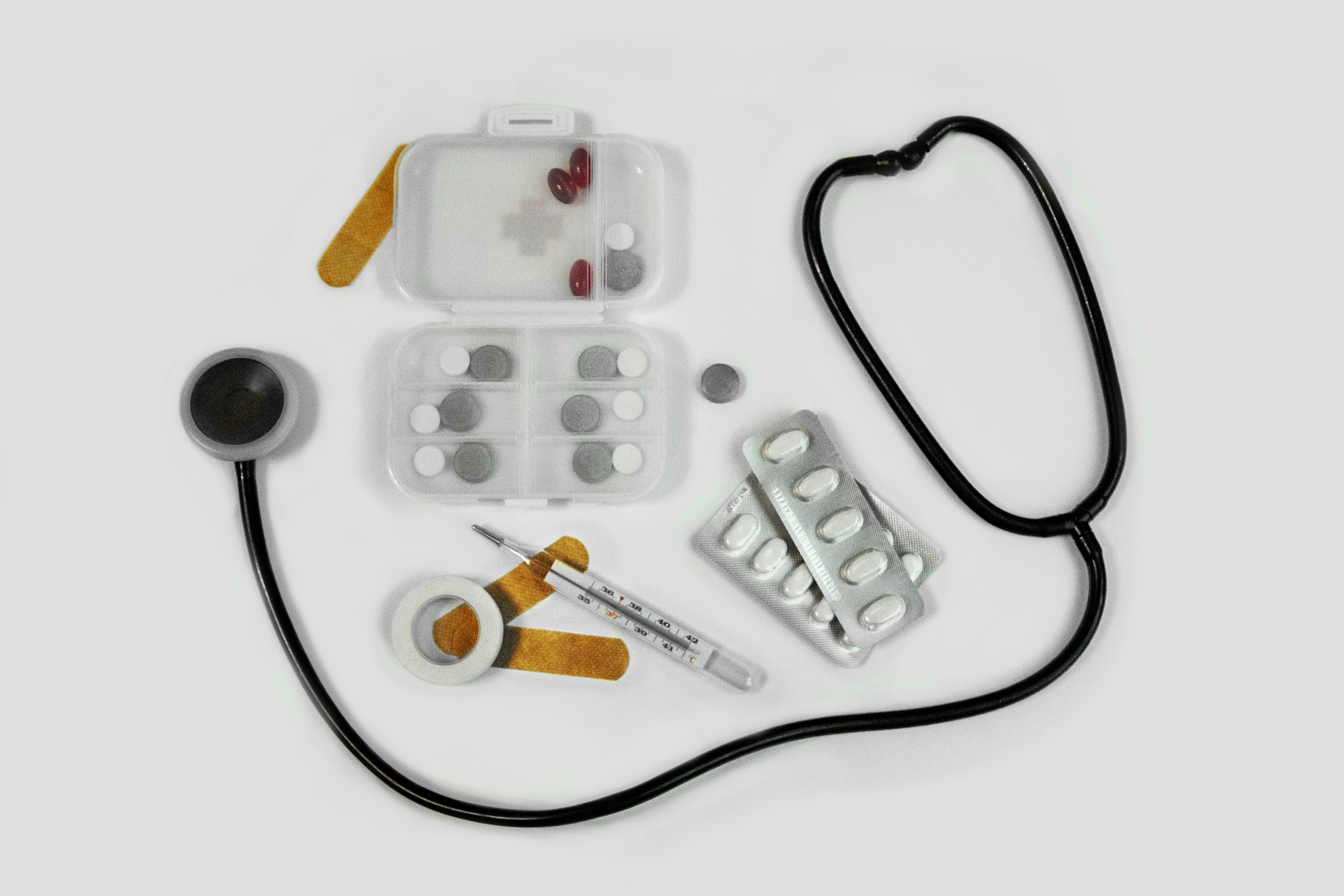Vaginal discharge is a natural and essential function of the reproductive system. It helps maintain a healthy balance of bacteria, removes dead cells, and keeps the vagina clean.
However, different types of discharge—such as differences in color, texture, smell, or volume—can sometimes indicate an infection or an underlying health concern, including sexually transmitted diseases (STDs). Understanding what is normal and when to seek medical advice is crucial for maintaining vaginal health.
What Is Discharge?
Vaginal discharge is a fluid produced by the cervix and vaginal walls that helps keep the vagina clean and lubricated. It consists of mucus, bacteria, and dead cells, and its composition varies throughout the menstrual cycle due to hormonal changes.
While all individuals with vaginas experience some level of discharge, its appearance and consistency can fluctuate depending on factors like ovulation, sexual activity, and overall health.
Normal vs. Abnormal Vaginal Discharge
Understanding the differences between normal and abnormal vaginal discharge can help you recognize potential health concerns.
Normal Discharge
Normal vaginal discharge is a natural and essential part of reproductive health. It plays a key role in keeping the vagina clean, maintaining a balanced pH, and preventing infections by flushing out bacteria and dead cells.
The appearance and amount of discharge can vary based on factors such as hormonal changes, menstrual cycle phases, pregnancy, and sexual activity. Here’s what you can expect from normal discharge:¹,²
- Color:Clear discharge, white discharge, or slightly yellow discharge are considered normal. Milky white discharge might occur during certain points in the cycle, particularly after ovulation. Red or brown discharge is also normal when it occurs around the time of menstruation.
- Texture: Can range from thin and watery to thick and stretchy, depending on the time of the month. Watery discharge is common right after menstruation, while a more egg-white consistency is typical around ovulation.
- Smell: Mild or odorless; a slight musky scent is normal but should not be overpowering or unpleasant.
- Amount: Varies due to hormonal fluctuations but should not be excessive or cause discomfort. Some people naturally produce more discharge than others, and an increase may occur during ovulation, pregnancy, or sexual arousal.
Abnormal Discharge
Abnormal vaginal discharge can be a sign of an underlying health issue, such as an infection, bacterial imbalance, or a sexually transmitted disease (STD).
While some changes in discharge are temporary and harmless, significant shifts in color, consistency, or smell—especially when accompanied by discomfort—should not be ignored. Identifying abnormal discharge early can help prevent complications and ensure proper treatment. Here are some of the signs of abnormal discharge:¹,²
- Color: Gray, brown, yellow, or green discharge may indicate an infection, such as bacterial vaginosis (BV), trichomoniasis, or an STD like chlamydia or gonorrhea. Brown discharge can sometimes be old blood from irregular spotting.
- Texture: Chunky, frothy, or thick white discharge is often a sign of an infection. A clumpy, cottage cheese-like texture is associated with yeast infections, while frothy discharge is a common symptom of trichomoniasis.
- Smell: A strong, foul, or fishy odor can signal bacterial infections like BV or trichomoniasis. Normal discharge has little to no scent, so a noticeable odor change should be evaluated.
- Symptoms: Itching, burning, or irritation around the vagina or vulva often accompanies infections and can worsen if left untreated.
- Pain: Painful urination or discomfort during intercourse, along with abnormal discharge, may be a sign of an STD or another infection affecting the vaginal or urinary tract.
If you notice any of these changes, it is important to seek medical attention to determine the cause and receive appropriate treatment.
Common Causes of Abnormal Vaginal Discharge
Several factors can cause abnormal discharge, ranging from bacterial imbalances to sexually transmitted infections (STIs).
1. Yeast Infections
Yeast infections occur when the fungus Candida overgrows, often due to antibiotics, high sugar intake, hormonal changes, or a weakened immune system.
Symptoms include thick, white, clumpy discharge (similar to cottage cheese), intense itching, burning, and redness. Treatment typically involves antifungal medications, available as topical creams or oral tablets.
2. Bacterial Vaginosis (BV)
Bacterial vaginosis (BV) results from an imbalance of vaginal bacteria, often triggered by douching, new sexual partners, or disruptions in pH levels.
BV discharge is thin and grayish-white with a strong fishy odor, particularly after sex. BV is treated with prescription antibiotics such as metronidazole or clindamycin.
3. Sexually Transmitted Diseases (STDs)
Some sexually transmitted diseases or infections can cause noticeable changes in vaginal discharge. Common STDs that affect discharge include:²
- Chlamydia can cause yellow or greenish discharge, though many people experience no symptoms. When symptoms do occur, they may include pain during urination or sex and require antibiotic treatment.
- Gonorrhea often leads to thick yellow or green discharge, sometimes accompanied by painful urination or spotting between periods. It is treated with antibiotics to prevent complications.
- Trichomoniasis produces frothy, greenish-yellow discharge with a strong odor, along with itching, burning, and discomfort during urination. A single-dose antibiotic can effectively clear the infection.

Preventing Infections and Maintaining Vaginal Health
Maintaining vaginal health requires good hygiene, safe practices, and regular medical checkups.
Practicing safe sex by using condoms or dental dams can help lower the risk of STDs, while routine STI screenings allow for early detection and treatment
Avoiding douching is essential, as it disrupts the natural balance of bacteria in the vagina and may increase infection risk.
Wearing breathable, cotton underwear helps reduce moisture buildup and bacterial growth, creating a healthier environment.
Lastly, maintaining a balanced diet with probiotics, such as those found in yogurt, supports vaginal health and overall well-being.
Following these habits can help prevent infections and promote long-term vaginal health.
When to See a Doctor
If you experience what appears to be STD discharge accompanied by other symptoms like itching, pain, or a strong odor, it’s important to consult a doctor. Here are key signs that medical attention is necessary:
- Persistent unusual discharge that does not improve
- Strong, unpleasant odor that is new or worsening
- Pain or burning during urination or intercourse
- Lower abdominal pain or pelvic discomfort
Seeking medical care early can help prevent complications and ensure timely treatment. Telehealth services offer a convenient and discreet way to consult with a healthcare provider, especially for STD testing and treatment.
Frequently Asked Questions
What kind of STD causes discharge?
STDs like chlamydia, gonorrhea, and trichomoniasis can cause abnormal vaginal discharge, often accompanied by changes in color, odor, or texture.²
How can I tell if a woman has an STD?
Many STDs have no symptoms, but signs can include unusual discharge, itching, burning during urination, sores, or pelvic pain. The only way to know for sure is through testing.
Can an STD throw off your pH balance?
Yes, STDs like trichomoniasis and bacterial infections such as BV can disrupt vaginal pH, leading to odor, irritation, and abnormal discharge.
What does STD discharge look like?
STD-related discharge can vary in color, texture, and odor. It may appear yellow, green, gray, or frothy and often has a strong or unpleasant smell. It can also be accompanied by itching, burning, or irritation.²
Get Fast, Discreet Treatment with 24hrdoc
If you're experiencing unusual discharge, discomfort, or other symptoms, don’t wait to seek care.
24hrdoc offers fast, confidential online treatment for STDs and STIs, yeast infections, and bacterial vaginosis (BV), so you can get the medication you need without the hassle of a doctor’s visit. Our licensed medical providers are available 24/7 to diagnose and prescribe the right treatment, all from the comfort of your home.
Take control of your vaginal health today—get started with 24hrdoc for expert care, discreet service, and quick relief.
Sources:
- Healthline. The Ultimate Vaginal Discharge Color Guide.
- Cleveland Clinic. Vaginal Discharge.





